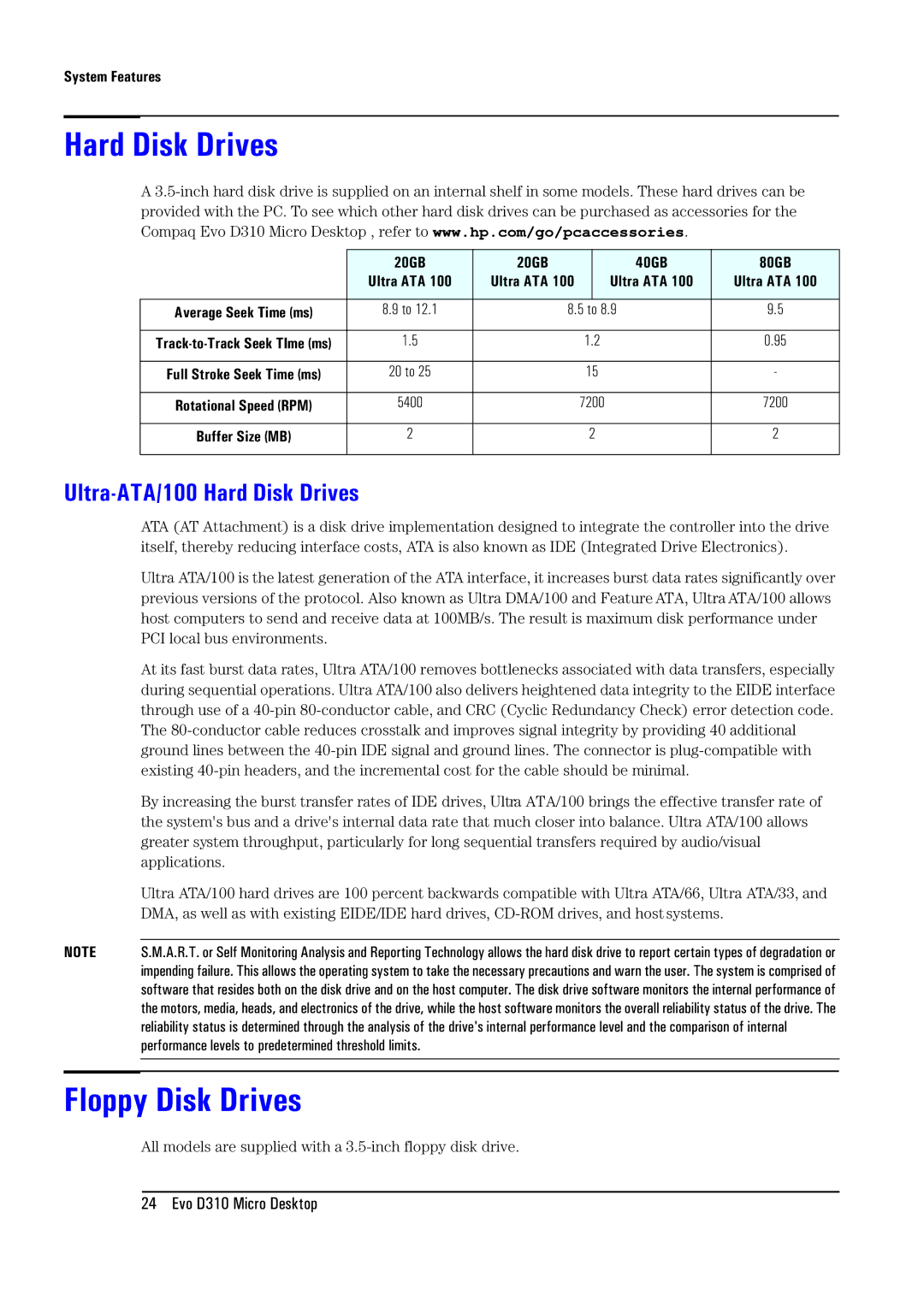
System Features
Hard Disk Drives
A
| 20GB | 20GB |
| 40GB | 80GB |
| Ultra ATA 100 | Ultra ATA 100 |
| Ultra ATA 100 | Ultra ATA 100 |
|
|
|
|
| |
Average Seek Time (ms) | 8.9 to 12.1 | 8.5 to 8.9 | 9.5 | ||
|
|
|
|
| |
1.5 |
| 1.2 | 0.95 | ||
|
|
|
|
| |
Full Stroke Seek Time (ms) | 20 to 25 |
| 15 | - | |
|
|
|
|
| |
Rotational Speed (RPM) | 5400 |
| 7200 | 7200 | |
|
|
|
|
| |
Buffer Size (MB) | 2 |
| 2 | 2 | |
|
|
|
|
|
|
Ultra-ATA/100 Hard Disk Drives
| ATA (AT Attachment) is a disk drive implementation designed to integrate the controller into the drive |
| itself, thereby reducing interface costs, ATA is also known as IDE (Integrated Drive Electronics). |
| Ultra ATA/100 is the latest generation of the ATA interface, it increases burst data rates significantly over |
| previous versions of the protocol. Also known as Ultra DMA/100 and Feature ATA, Ultra ATA/100 allows |
| host computers to send and receive data at 100MB/s. The result is maximum disk performance under |
| PCI local bus environments. |
| At its fast burst data rates, Ultra ATA/100 removes bottlenecks associated with data transfers, especially |
| during sequential operations. Ultra ATA/100 also delivers heightened data integrity to the EIDE interface |
| through use of a |
| The |
| ground lines between the |
| existing |
| By increasing the burst transfer rates of IDE drives, Ultra ATA/100 brings the effective transfer rate of |
| the system's bus and a drive's internal data rate that much closer into balance. Ultra ATA/100 allows |
| greater system throughput, particularly for long sequential transfers required by audio/visual |
| applications. |
| Ultra ATA/100 hard drives are 100 percent backwards compatible with Ultra ATA/66, Ultra ATA/33, and |
| DMA, as well as with existing EIDE/IDE hard drives, |
NOTE |
|
S.M.A.R.T. or Self Monitoring Analysis and Reporting Technology allows the hard disk drive to report certain types of degradation or | |
| impending failure. This allows the operating system to take the necessary precautions and warn the user. The system is comprised of |
| software that resides both on the disk drive and on the host computer. The disk drive software monitors the internal performance of |
| the motors, media, heads, and electronics of the drive, while the host software monitors the overall reliability status of the drive. The |
| reliability status is determined through the analysis of the drive's internal performance level and the comparison of internal |
| performance levels to predetermined threshold limits. |
|
|
|
|
Floppy Disk Drives
All models are supplied with a
24 Evo D310 Micro Desktop
